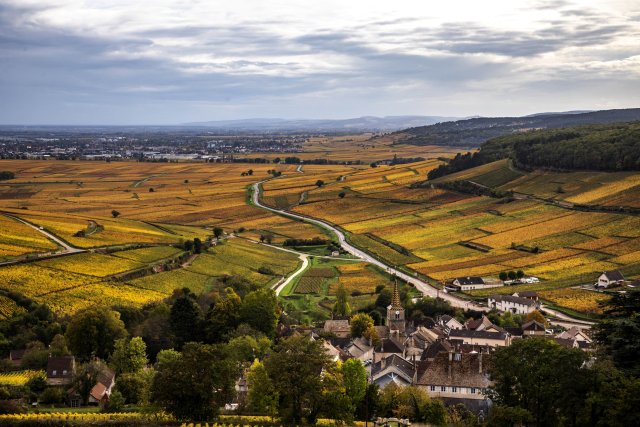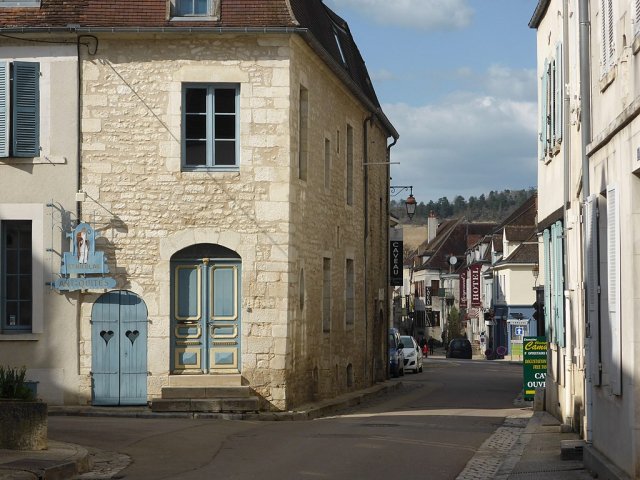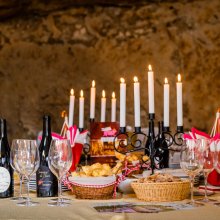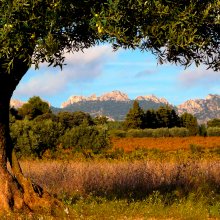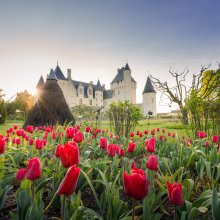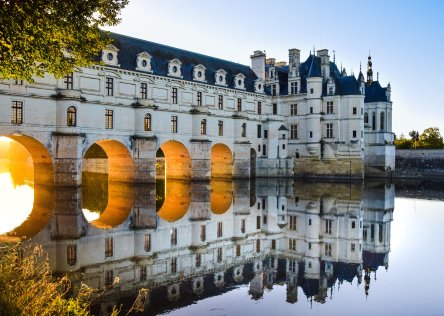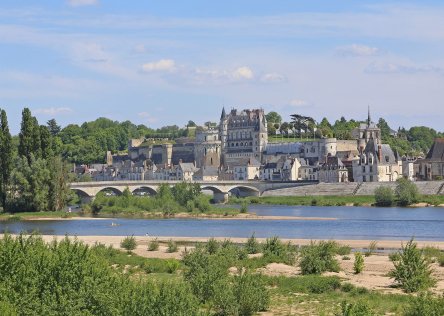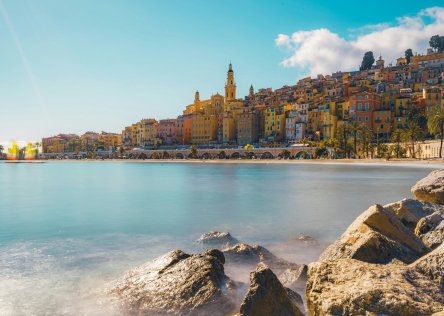If you hear the word 'Burgundy', you might find yourself thinking of some of the finest wines in the world... Meursault, Nuits Saint Georges, Pommard, and Vosne-Romanée. Famous for its Chardonnay and Pinot Noir, Burgundy has some of the most celebrated vineyards in the world. But this region is so much more than its wine.
This post gives you some ideas of things to do in Burgundy, France - we hope it will inspire you to come and visit this region.
From the medieval hospices and wine cellars of Beaune to the mustard shops of Dijon and some of the most beautiful villages in France, we would love to help you explore this region on one of our self-guided tours of Burgundy.
Explore Beaune: The Wine Capital of Burgundy
Beaune is often referred to as the wine capital of Burgundy, encircled by 900-year-old ramparts and bastions, and surrounded by some of the best and most famous vineyards in the world. As such, there are plenty of wine-tasting opportunities, and today it remains the center of Burgundy’s wine trade.
With so many wine cellars to choose from, it can be difficult to know where to taste the best wine and enjoy the best experience. We have selected several wine cellars that we recommend to our travelers, which we have tested and truly believe are worth a visit.
Of course, Beaune is so much more than its fine wine. The town’s architecture spans the Roman times, through medieval, Gothic, Renaissance and up to the modern period.
Places to visit in Beaune include the stunning medieval hospices and the Basilique Notre-Dame de Beaune, a 13th-century church that also has Gothic and Renaissance features.
If you’re there on a Wednesday, you’ll be able to visit the town’s small outdoor market, or an even nicer and more extensive market on Saturdays. There, you can stock up for a picnic (or go to a local charcuterie on a non-market day) at the lovely Parc de la Bouzaise.

©
Pixabay CC0
Visit Dijon: Home to the Famous Mustard
Dijon, the capital of Cote d’Or department in northeastern Burgundy, has changed a lot in recent years. A lot of work has been done to restore and improve the historical and architectural aspects of the town, yet it is a lively, modern city with a significant student population and plenty of charm!
Look for the owl that’s carved into the wall outside the Church of Notre Dame while you’re in Dijon. It’s said to bring good luck if you rub it with your left hand!
If you’re interested in the Dukes of Burgundy, be sure to visit the Palace of the Dukes of Burgundy, which has artifacts dating back to the Middle Ages and Renaissance period. This is also a fine arts museum, and some visitors find the layout confusing - don’t hesitate to ask the staff for directions!
If you’re a foodie, a visit to the International City of Gastronomy and Wine in Dijon is a must. You’ll find exhibits explaining the history of food and wine in Burgundy, as well as cooking demonstrations and workshops you can participate in. Take the opportunity to sample some of the local wine and food on offer too!
The market at Les Halles (the covered market hall) is open on Tuesday, Friday and Saturday mornings, with an extended market lasting the whole day along the pedestrian streets on Saturdays, and a smaller market on Thursday mornings. This is a nice place to buy picnic supplies, before heading to a local park like Jardin Darcy or the Arquebuse Botanical Garden for a picnic.
If you’re a fan of mustard and would like to buy some excellent mustard for your picnic or as a souvenir to take home, head to Edmond Fallot Moutarderie. There you can see how the mustard is made, taste different varieties at the ‘Mustard Bar’ and then fill up your own Fallot jar with your chosen mustard. There’s also a cool vending machine that sells mini jars of mustard - ideal for your picnic!
Interesting fact: Dijon was the hometown of Gustave Eiffel, the civil engineer after whom the Eiffel Tower in Paris is named.
Try Some Smelly Époisses Cheese
If you’re interested in seeing how cheese is made and tasting some local cheeses, there are many fromageries (cheese shops and cheese factories), especially in and around Dijon and Beaune.
If you book one of our tours of Burgundy, we will tell you our favorite!
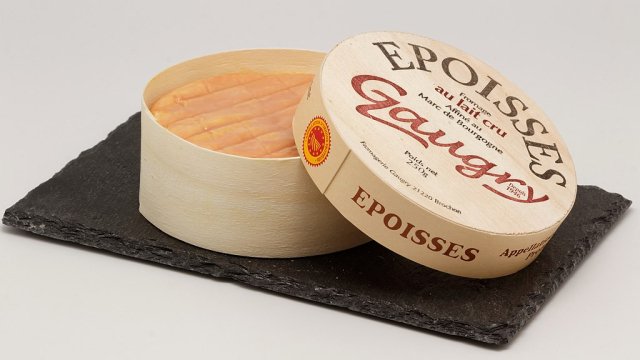
©
Coyau / Wikimedia Commons / CC BY-SA 3.0
Stroll Around Chablis & Its Vineyards
Most people visit the village of Chablis to sample some of the famous Burgundy wines; its light white wines are recognised as some of the best in the world.
The charming village is worth exploring too. If you enter the town center through Porte Noel, you can appreciate the two round towers, which used to be a gateway that controlled access to the village in the Middle Ages. As you stroll through the town, you'll see some medieval houses and Saint-Pierre and Saint-Martin churches. Look out for the horseshoes left by pilgrims on the door of Saint Martin's church, a Romanesque church dating from the 13th century (although the belltower was added later on).
Behind Saint Martin's church is L'Obédiencerie, now owned by Laroche wine-makers. You can book a tour and a wine-tasting and see the old wine press once used by monks, who first settled in Chablis in the year 854, and the wine caves where the wines are still aged today. The building dates back to the 15th century and is typical of the style of building in Burgundy in that period.
If you would like to walk or drive around the town to see the vineyards, the tourist office in Chablis can suggest some routes to follow.
Of course, if you book a tour of Burgundy with France Just For You, we will include our favorite driving routes in your itinerary!
Drive Through Vineyards That Other Tours Don’t Go To
When you book a tour with France Just For You, we will always include plenty of opportunities to explore away from the tourist crowds. In Burgundy, we work with a wine tour guide Sebastien, who is an expert and passionate about wine. In his four-wheel-drive, he takes travelers off the beaten track (literally) through the vineyards on trails that other tours don’t cover. He’ll share his knowledge about the region, the grapes and the vineyards, and then take you to some lovely wineries where you can taste and drink to your heart’s content (since Sebastien’s driving!).
We have an interview with Sebastien and Eve, his wife and business partner, on our blog, if you would like to find out more.
If wine-tasting tours and viticulture is a particular interest of yours, we warmly invite you to look at our France for Wine Lovers tour!

©
Chemins de Bourgogne
Eat the Best Snails in France
Our Senior Trip Planner Laura has a nice anecdote and a couple of tips for eating snails in France:
‘The first time I ate escargots was at my mother-in-law’s table. They were not placed in the shell, as in any true Burgundy household; she has special little escargot dishes that are like little thimbles to hold each escargot and the perfect amount of garlic and parsley butter.
You should not be nervous about trying escargots - the butter is SO delicious that anything would be amazing.
Served with a crusty baguette to soak up the remaining butter and a chilled Chablis, nothing is better!’
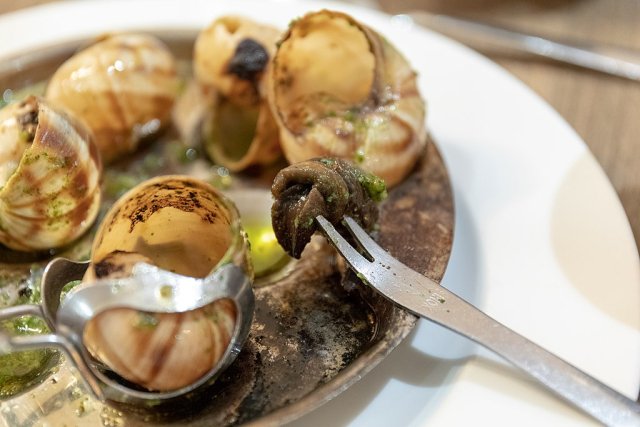
©
Marvel at the Medieval Abbeys & UNESCO sites
There are several abbeys in Burgundy that are worth visiting for their outstanding architecture and historical significance.
The first we recommend visiting is Fontenay Abbey, a former Cistercian abbey founded in 1118 by St Bernard of Clairvaux. Built in a Romanesque style using stone from the local area, this UNESCO World Heritage site is one of the oldest and best preserved Cistercian abbeys in Europe.
Vézelay Abbey is a 12th-century Benedictine and Cluniac monastery. It is a masterpiece of Burgundian Romanesque architecture, with ornate sculpted capitals and portals. Both the church and hill at Vézelay are listed as UNESCO World Heritage sites for their importance in medieval Christianity and exceptional architecture.
Cluny Abbey is a former Benedictine monastery founded in Cluny by Duke William I of Aquitaine in 910 and dedicated to Saint Peter. It was built in the Romanesque style including three churches that were built successively between the 4th and 12th centuries. The earliest one was the largest church in the world until St. Peter's Basilica in Rome was built. Sadly, the abbey was sacked during the French Revolution in the late 18th century, and only a small part of the original abbey survives. This may be of particular interest to travelers interested in archeology.
A visit to the Château de Guédelon is the chance to see a medieval-style castle being built in the modern day. The workers involved in the project are using solely building techniques, tools and clothing that would have been available in the Middle Ages. This unique living history project began in 1997, and will be completed in the coming years. If you're a history buff, this is the chance to immerse yourself in the Middle Ages and discover what medieval castle construction really looked like, from carpentry to quarrying stones to blacksmithing.
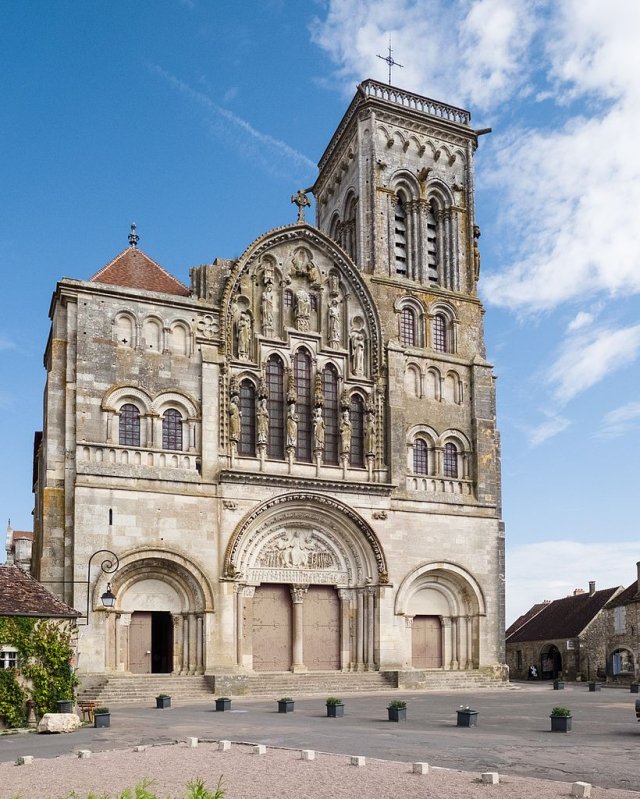
©
FAQs about traveling to Burgundy
Where to stay in Burgundy France
Our recommendation is to stay in or near Beaune. It is close to some of the finest vineyards in France, and the town itself is charming and beautiful. It is also only a 45-minute drive from the vibrant city of Dijon, so you can experience this lively city without being too close to the hustle and bustle.
Tips for driving through Burgundy France
Try to avoid the main road between Beaune and Dijon (this is an industrial area). You’ll enjoy the best scenery along the small roads of the hillside. In the personalized guidebook you receive when you book a self-drive tour with us, we explain which routes to take, along with marked maps.
When is the best time to visit Burgundy?
The best time to visit Burgundy, in our view, is during May, June, September, and October. These months offer you the best chance of enjoying nice weather during your trip, and avoiding the summer tourist crowds.
We warmly invite you to browse our tours of Burgundy France.
All our self-drive tours of France can be customized according to your wishes and preferences. No two tours that we plan are the same!


